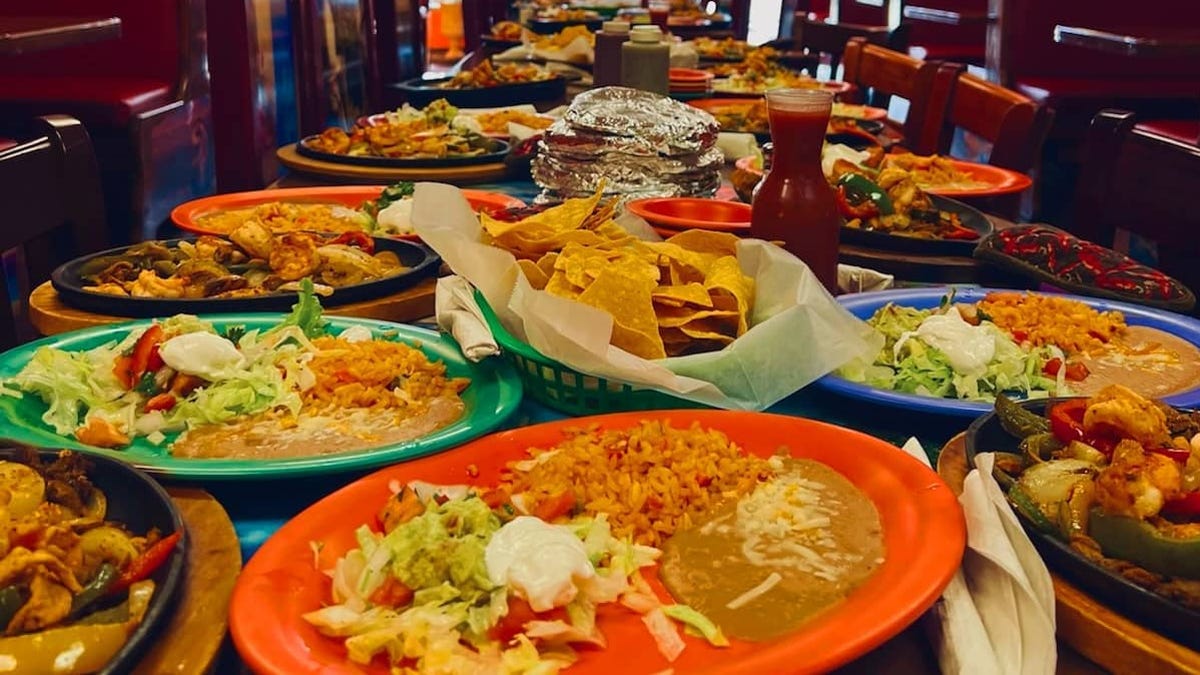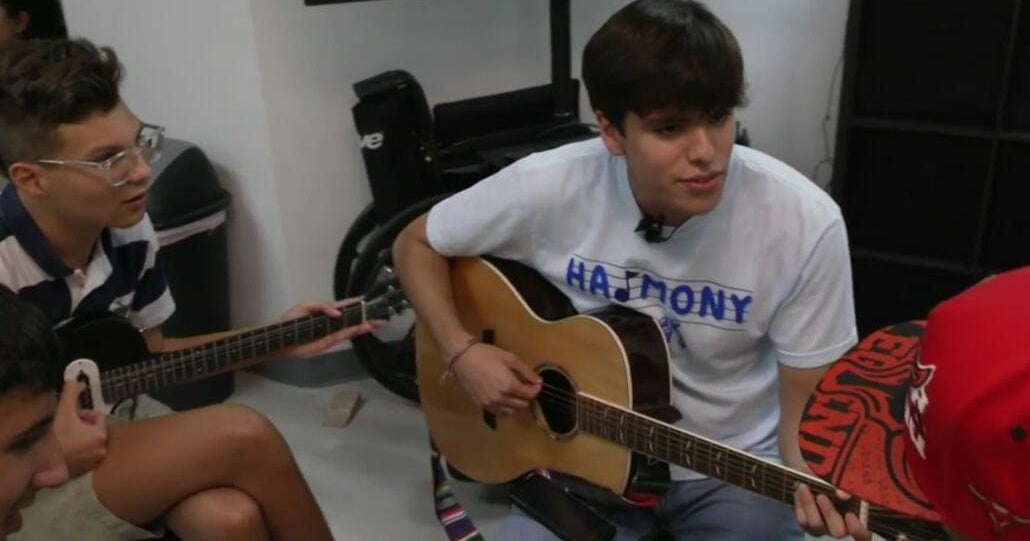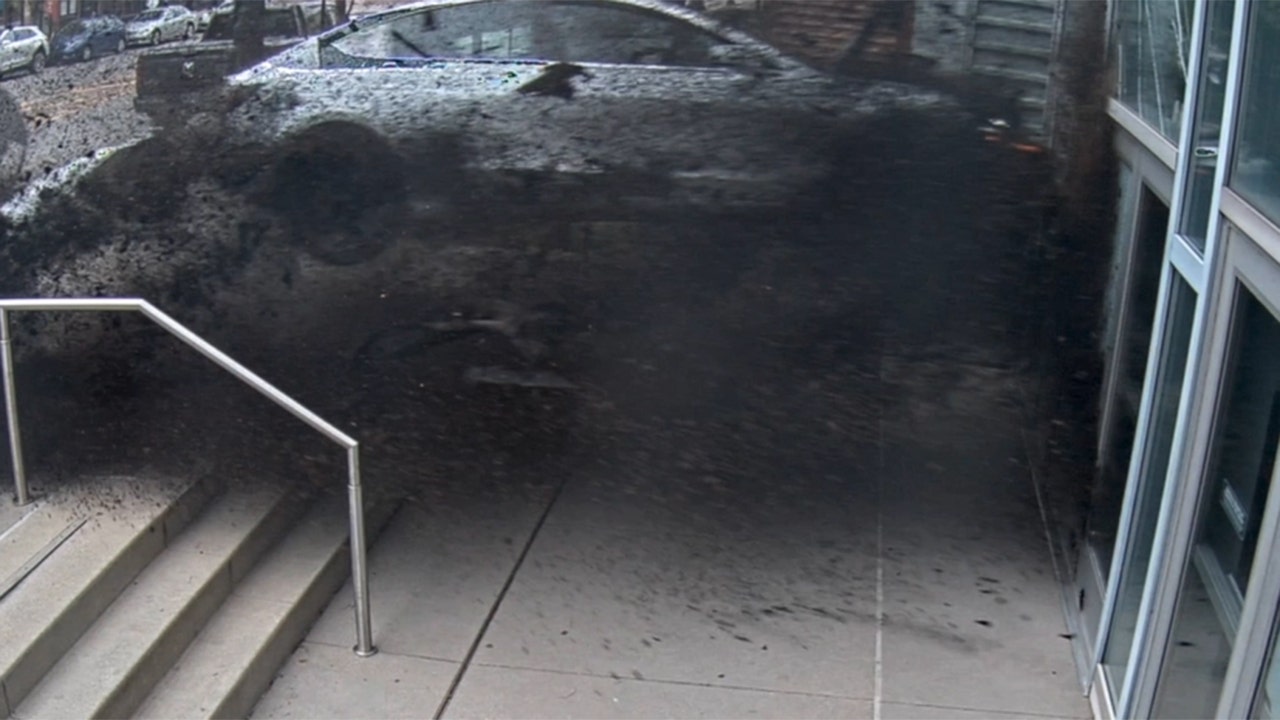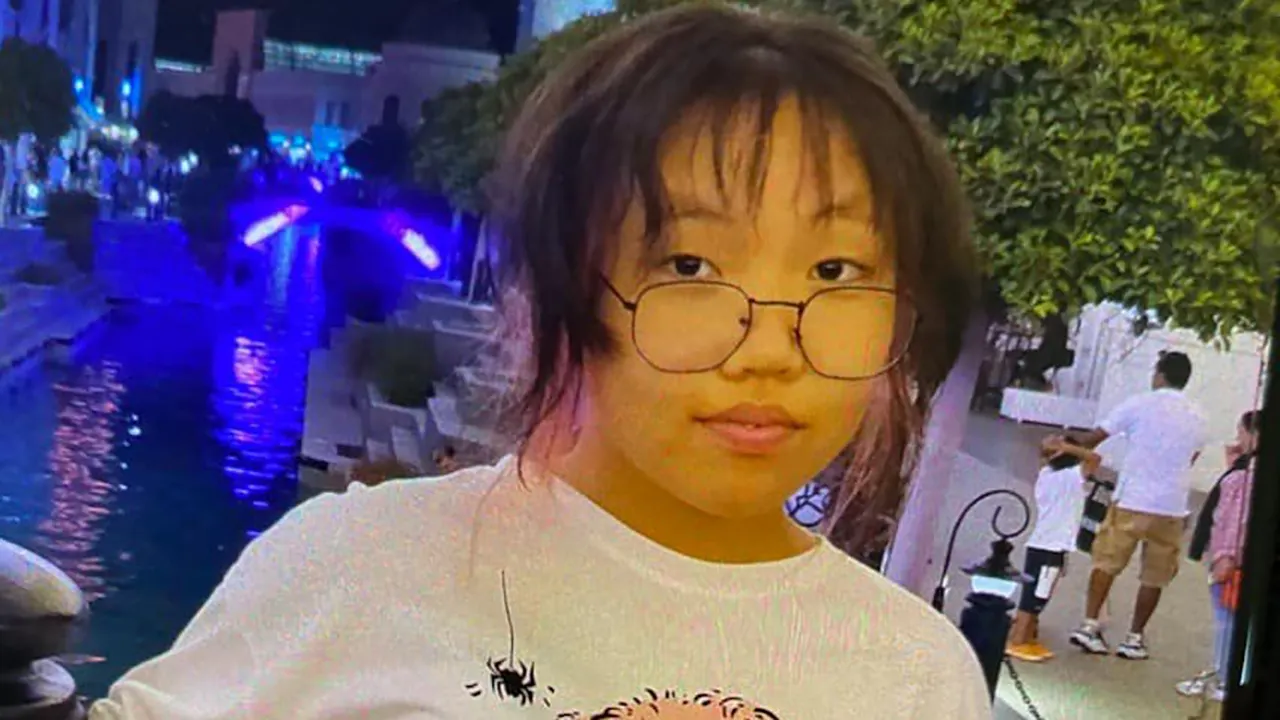Art for ‘Encanto’ by Lorelay Bové
World
Gaza death toll surpasses 20,000 as UN Security Council delays vote on aid
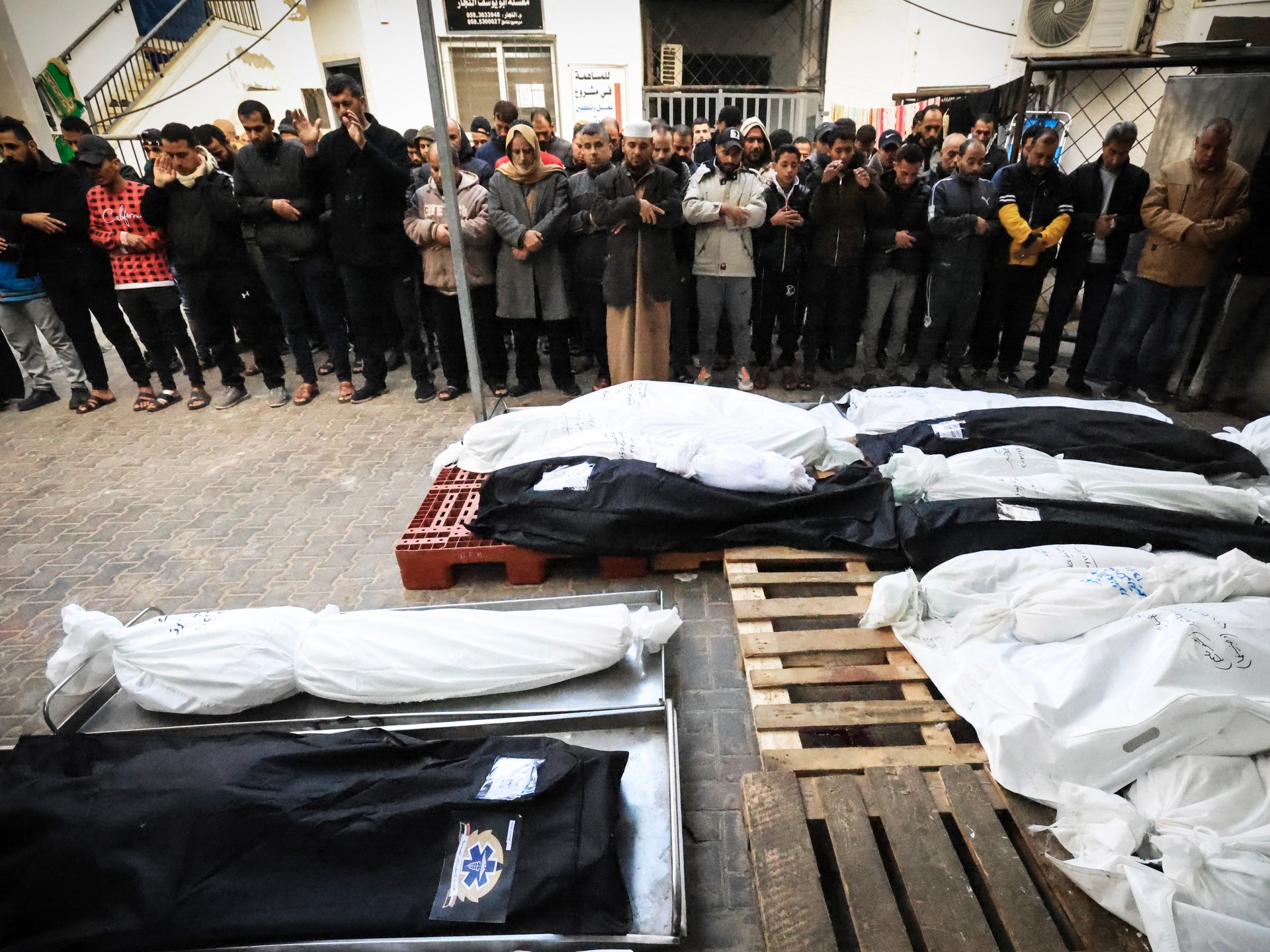
At least 20,000 people have been killed in the Gaza Strip since Israel began bombarding the enclave more than 10 weeks ago, according to Palestinian officials.
At least 8,000 children and 6,200 women are among those killed, Gaza’s Government Media Office said on Wednesday.
The grim milestone was passed as the United Nations Security Council postponed a key vote on a bid to boost humanitarian aid for Gaza for the third time to avoid a veto from the United States, which traditionally shields its ally Israel from UN action.
Since a seven-day truce collapsed on December 1, the war has entered a more intensive phase with ground combat previously confined to the northern half of the territory now spread across its length.
When asked about the ever-growing casualty count, US Secretary of State Antony Blinken said it is “clear that the conflict will move and needs to move to a lower intensity phase”.
“We expect to see and want to see a shift to more targeted [Israeli] operations with a smaller number of forces that’s really focused in on dealing with the leadership of Hamas, the tunnel network and a few other critical things,” he said. “And as that happens, I think you’ll see as well the harm done to civilians also decrease significantly.”
Air strikes continued across Gaza on Wednesday with at least 46 people killed and dozens wounded in Israeli attacks on the Jabalia refugee camp in northern Gaza, according to the enclave’s Ministry of Health.
In Rafah in the southern Gaza Strip, where hundreds of thousand of people have been pushed since early December by Israel’s continued onslaught, air strikes hit a building near a hospital close to an Al Jazeera crew reporting live on air, killing at least 10 people.
“More air strikes are conducted, more victims fall due to the expansion of the Israeli military operations in the areas that are supposed to be safe zones where the majority of Gazans have been urged to flee,” Al Jazeera’s Tareq Abu Azzoum said in reporting from Rafah.
“The air strike took place in an area considered to be very densely populated, and it’s a miracle that no more than this number of people were killed,” he added.
Key Security Council vote postponed
The UN Security Council vote on a bid to boost aid to the Gaza Strip and ask the UN to monitor humanitarian aid deliveries there has been delayed at the request of the US, diplomats said.
According to the United Arab Emirates envoy to the UN, Lana Nusseibeh, the vote will take place on Thursday.
“Everyone wants to see a resolution that has impact and is implementable on the ground, and there are some discussions going on on how to make that possible,” Nusseibeh, whose country drafted the resolution, told reporters in New York.
The text aims to dilute Israel’s control over all humanitarian aid deliveries to the 2.3 million people of Gaza. The initial text has been reportedly modified to soften calls to end the fighting in Gaza to avoid yet another veto from the US.
“We want to make sure that the resolution … doesn’t do anything that could actually hurt the delivery of humanitarian assistance, make it more complicated. That’s what we’re focused on,” Blinken told reporters on Wednesday. “I hope we can get to a good place.”
Currently, Israel monitors the limited humanitarian aid and fuel deliveries to Gaza via the Rafah crossing from Egypt and the Israel-controlled Karem Abu Salem crossing, known as Kerem Shalom in Hebrew.
On Wednesday, the first aid convoy entered Gaza directly from Jordan with 750 metric tonnes of food. The World Food Programme said half of Gaza’s population is starving and only 10 percent of the food required has entered Gaza since the war began on October 7.
The US and Israel oppose a ceasefire, believing it would benefit only Hamas. Washington instead supports pauses in fighting to protect civilians and allow the release of captives taken by Hamas.
Hamas leader in rare visit to Egypt
Separately on Wednesday, Hamas leader Ismail Haniyeh paid his first visit to Egypt for more than a month in a rare personal intervention in diplomacy amid hopes that the Palestinian group and Israel could agree terms for another truce.
Haniyeh arrived in the Egyptian capital to meet with Cairo’s spy chief and other Egyptian officials who are acting as key mediators. Meanwhile, Israeli officials have indicated in talks with US and Qatari representatives that they could be open to a truce.
The Hamas leader last travelled to Egypt in early November before the announcement of the only pause in the fighting so far, a weeklong truce that saw the release of about 110 of 240 captives taken by Hamas into Gaza on October 7.
The Palestinian Islamic Jihad, a smaller armed group that is also holding captives in Gaza, said its leader would also visit Egypt in the coming days to discuss a possible end to the war.
A source briefed on the negotiations said envoys were discussing which of the captives still held by Palestinian groups could be freed in a new truce and what prisoners Israel might release in return, the Reuters news agency reported.
But there remains a huge gulf between the two sides’ publicly stated positions on any halt to the fighting. Hamas rejects any further temporary pause and says it will discuss only a permanent ceasefire. Israel has ruled that out and says it will agree only limited humanitarian pauses until Hamas is defeated.
US President Joe Biden said he did not expect an Israel-Hamas deal for the release of captives held in Gaza to be struck soon.
“We’re pushing,” Biden told reporters during a trip to Milwaukee, Wisconsin.

World
Walt Disney Animation Studios World Premieres Whimsy & Talent Exhibition at 20th Animayo Gran Canaria Festival (EXCLUSIVE)

Walt Disney Animation Studios is paying tribute to female talent in art and animation at a one-of-a-kind exhibition during the Gran Canaria-based Animayo, Spain’s only Oscar-qualifying animation festival. From May 7-10, the exhibition Whimsy & Wonder will be exclusively on display at the fest.
Disney, an official sponsor this year, will celebrate the female artists who helped shape Disney’s visual storytelling for more than a hundred years. These include the trailblazing Mary Blair, who transformed the use of color in the 1950s, and the visionary women behind modern favorites like “Frozen,” “Encanto” and “Moana 2.” The exhibition is a homage to the women who have shaped the past—and are defining the future—of animation.
In the 1940s and ’50s, Blair (1911–1978, American), a celebrated color stylist and art director, brought a bold new vision to Disney animation. Her imaginative use of vibrant colors and whimsical shapes sparked a transformative shift in the studio’s style during the mid-20th century.
Whimsy & Wonder will offer a glimpse into the creative contributions of talented visual development and storytelling artists at Walt Disney Animation Studios, from films like “The Princess and the Frog” (2009) to Disney Animation’s most recent animated feature, “Moana 2” (2024).

Costume Design for Disney’s ‘Frozen 2’ by Brittney Lee (visual development artist).
The exhibition will showcase works by Blair and from six extraordinary artists at Walt Disney Animation Studios:
- Lorelay Bové (Spain/Andorra): Visual development artist on “Big Hero 6,”” Zootopia,” “Wreck-It Ralph,”” The Princess and the Frog” and associate production designer of Oscar-winner “Encanto.” Bové will also be present at Animayo to give a Masterclass and participate in an exclusive portfolio review session.
- Lisa Keene: Production designer and visual development artist on “Wish,” “Frozen” and classics such as “Beauty and the Beast” and “The Lion King.”
- Brittney Lee: Production designer and visual development artist, renowned for her iconic costume design for Elsa in “Frozen” and the interior of Elsa’s ice palace.
- Griselda Sastrawinata-Lemay: Visual development artist on “Encanto”,” Moana,” “Raya and the Last Dragon” and associate production designer on “Wish.”
- Josie Trinidad: Emmy-winning director and head of story on “Zootopia” and “Ralph Breaks the Internet.”
- Fawn Veerasunthorn: Director of “Wish” and head of story on “Raya and the Last Dragon.”
Exhibition takes place in the Manolo Millares & Elvireta Escobio hall at the Centro de Iniciativas de La Fundación La Caja de Canarias, CICCA, which is also a sponsor of the fest.
Led by founder-director-producer Damián Perea, Animayo Gran Canaria 2025 will bring together more than 40 distinguished speakers and special guests, featuring artists, creators, and experts from prominent studios, production companies and academic institutions from around the world.
Expressing delight at the fact that Walt Disney Animation Studios chose Animayo to present this unique exhibition on the occasion of the festival’s 20th anniversary, Perea said: “The Walt Disney Animation Research Library has curated a one-of-a-kind exhibition that spans over a century of artistic inspiration. Without a doubt, it will be an inspiration for many of the girls and young women attending the festival, who will feel empowered by the six incredible female artists showcased in this exhibition.”
As it celebrates 20 years of creativity and impact in the Canary Islands, a burgeoning animation hub, this premiere marks a milestone for Animayo, the only Oscar-qualifying festival in Spain. Iran’s “In the Shadow of the Cypress,” winner of Animayo’s Best International Short Film prize in 2024, went on to win best animated short at the 97th Academy Awards this year.
The festival’s growing roster of sponsors are led by the Cabildo of Gran Canaria through the Presidency Department, the Society for the Promotion of the City of Las Palmas de Gran Canaria, the Department of Tourism, Industry and Commerce of the Government of the Canary Islands through Promotur and from the Canary Islands Institute for Cultural Development (ICDC), Gran Canaria Tourism, the La Caja de Canarias Foundation, and the Government of the Canary Islands. Animayo also relies on the participation of several production companies, studios, schools, and universities.

Concept Art for ‘Raya and the Last Dragon’ by Griselda Sastrawinata-Lemay (visual development artist)
World
UN cash app for Gazans exploited by Hamas as terror group steals aid money meant for civilians
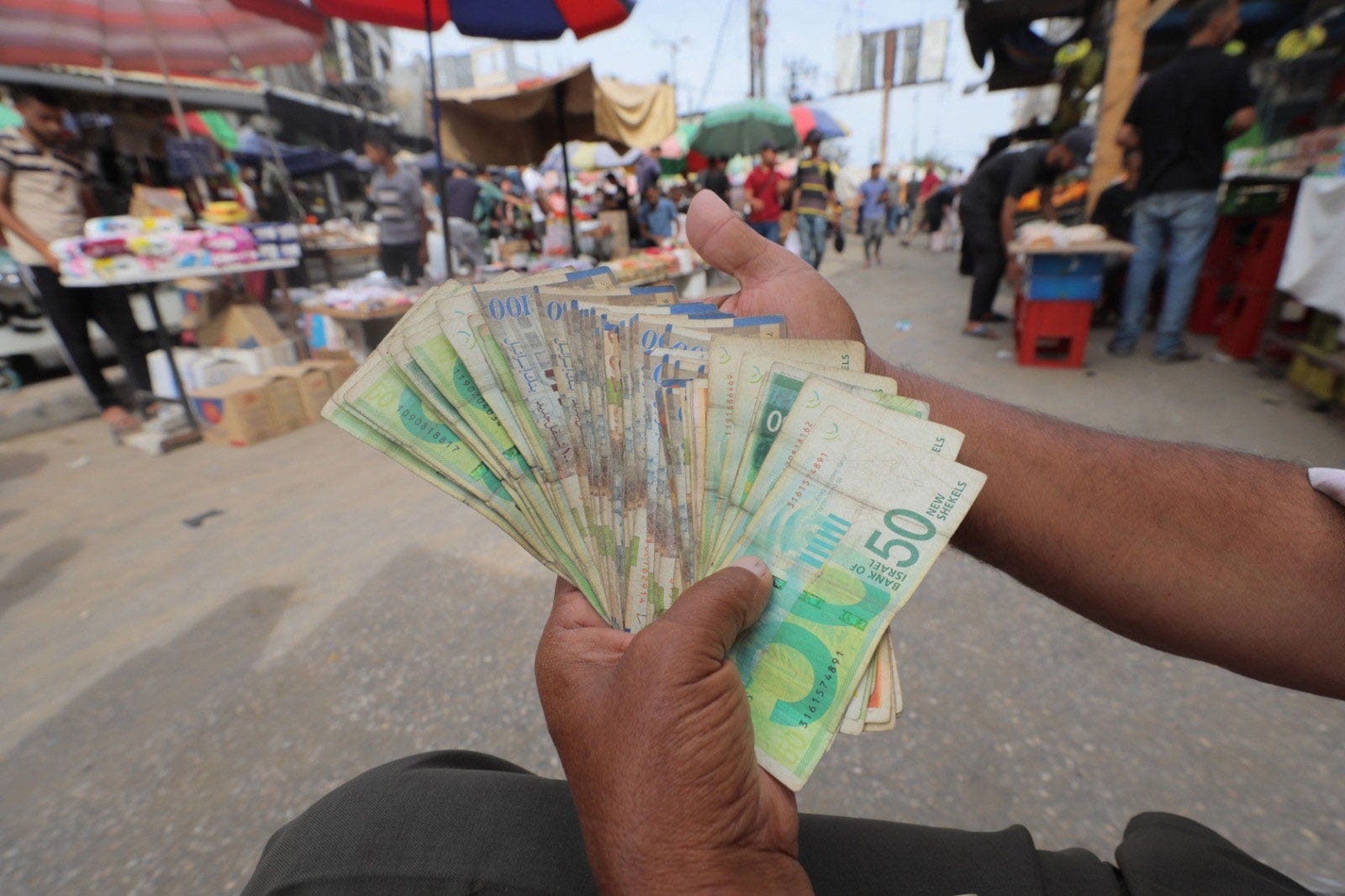
Protesters in Gaza target Hamas
For the first time since Hamas seized power 18 years ago, Gazans are speaking out against Hamas at great personal risk, Fox News’ Mike Tobin reports.
United Nations agencies’ monthly cash transfers to Gaza residents are inadvertently strengthening the Hamas terrorist organization, as the group and affiliated traders continue to control the money flow to the enclave, an expert on Hamas’ financial and economic operations said.
“Hamas exploits its role as the de facto ruler of Gaza to extract financial gains from aid money sent by U.N. organizations to civilians via apps still operating in the region,” Eyal Ofer told Fox News Digital.
“The aid system is being manipulated by Hamas and affiliated traders. Hamas does this largely behind the scenes, leveraging their control over large merchants, crime families, and using cash to establish a shadow banking system within Gaza.”
HOW ISRAEL’S WAR AGAINST HAMAS TERRORISTS WILL BE DIFFERENT UNDER TRUMP
Gazans at a bazaar set up to meet their basic needs amidst the rubble in the heavily damaged Jabalia refugee camp in northern Gaza on the 3rd day of Ramadan, after Israel halted humanitarian aid to the Gaza Strip, on March 3, 2025. (Mahmoud Issa/Anadolu via Getty Images))
Each month, international organizations send significant sums into Gaza’s economy. The U.N.’s World Food Programme (WFP) transfers approximately $18.43 million, reaching 82,636 families, with each family receiving an average of $209, according to open-source data. UNICEF’s monthly assistance averages $5 million, helping to reach at least 20,000 families every month.
“I go to the market and meet people whose job is to provide cash in exchange for a fee,” Gaza resident Shahab Yousef told Israel’s news agency TPS-IL. “The fee is 20–30%. If I transfer 1,000 shekels [$271] I get back 700 [$190],” he said. “For big purchases, I pay digitally. But at the market, I need cash, and I lose 30 percent every time.”
Another Gaza resident, Nidal Qawasmeh, expressed similar frustration to TPS-IL. “These people are charging 30 percent just to give you cash. I just want to take care of my family, but everything costs me more because of this. Prices are insane.”
The specific amount received per family every month is around $270 (or 1,000 New Israeli Shekels), which was calculated as 80% of the Survival Minimum Expenditure Basket, UNICEF told Fox News Digital. Smaller organizations like UNFPA and others also contribute, bringing the total to about $39.66 million per month, reaching 60% of Gaza’s households, according to open-source data.
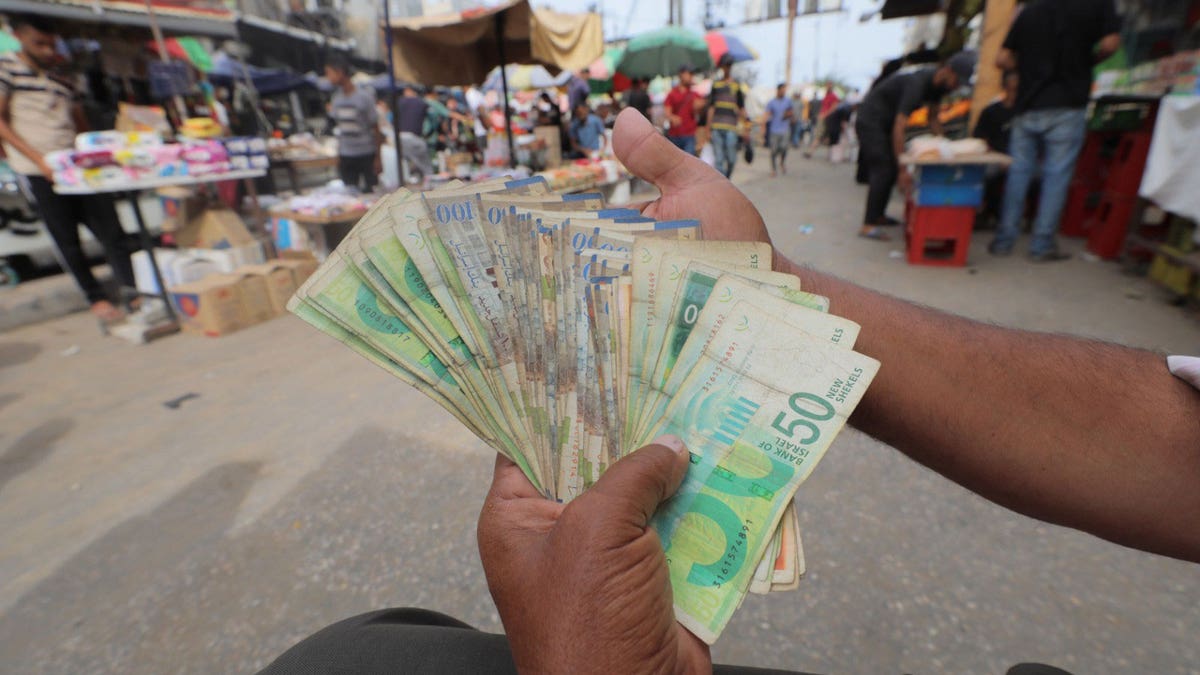
A man holds a wad of Israeli shekels in Gaza. (Majdi Fathi/TPS)
Despite the scale of direct financial aid, which reaches over half of the enclave’s population, Gaza’s severe food insecurity and high inflation (91% and 118%, respectively, as of January 2024) underscore its importance. However, the way this money circulates within Gaza is far more complex. “Hamas controls much of the cash that enters Gaza through various channels,” Ofer told Fox News Digital, “People who receive money via mobile apps must convert it into cash to use in local markets, but this involves hefty fees, with many money changers tied to Hamas or its allies.”
TPS-IL reported that Israel’s Foreign Minister Gideon Sa’ar recently warned that Hamas’s economic strength in Gaza relies on billions of shekels in cash, paid as salaries and quickly reclaimed through taxes on merchants. In a letter to Bank of Israel Governor Prof. Amir Yaron, Sa’ar urged the cancelation of the circulation of 200-shekel bills previously introduced into Gaza, saying that experts believe the move would severely damage Hamas’s financial network. The Bank of Israel rejected the proposal, citing technical reasons and claiming that implementation was not feasible.
Ofer’s research found that the fees can range from 20% to 35%, meaning recipients lose a significant portion of their aid just to access it. “In videos from Gaza, you can see traders refusing to accept app funds and forcing customers to convert them into cash, knowing they will lose at least 20% in the process,” he said.
Peter Gallo, an international lawyer and former Office of Internal Oversight Services (OIOS) investigator at the U.N., told Fox News Digital, “If an investigator in Israel can figure it out, the aid agencies either knew or should have known. Twenty to thirty percent is just ridiculous. That’s extortion. It’s what some have politely described as a ‘revolutionary tax.’ In fairness, the aid agencies might argue they had no alternative, It is the cost of doing business, but it would have been better if they were honest about it from the start.”
HAMAS TERROR GROUP REPORTEDLY BUCKLING UNDER FINANCIAL STRAIN AMID ISRAELI MILITARY GAINS AND GROWING UNREST
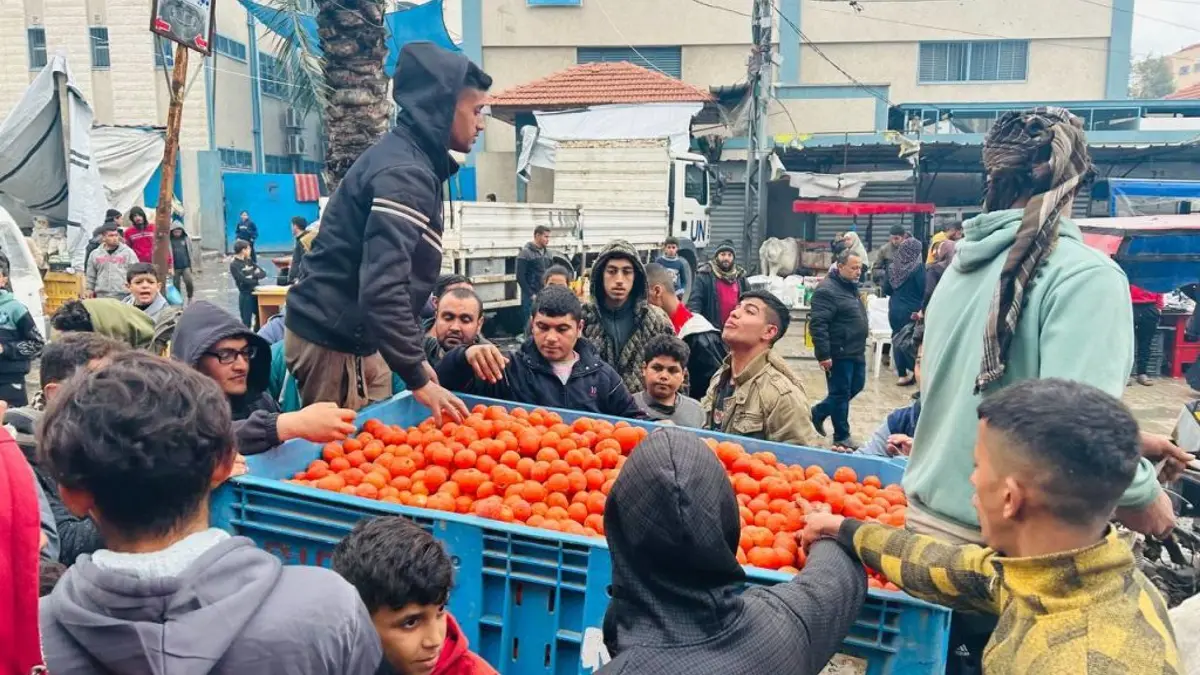
Palestinians shop for food and clothes at the local bazaar as daily life continues in the shadow of war in Jabalia, Gaza, on January 15, 2024. (Photo by Mahmoud Shalha/Anadolu via Getty Images) (Photo by Mahmoud Shalha/Anadolu via Getty Images)
A spokesperson for UNICEF told Fox News Digital, “UNICEF is aware of the cash liquidity crisis in Gaza and the continuous shortage of hard cash, which is a direct consequence of the banking system’s inability to function amid the ongoing conflict.
“Since May 2024, UNICEF has introduced fully digital cash payments via e-wallets, which do not require hard cash at any point. By using e-wallets, recipients of humanitarian digital cash transfers can purchase goods such as food, hygiene items and medicine without ever handling physical money,” the spokesperson said.
“The use of digital e-wallets can be accessed through an app and works on the most basic smartphones. When implemented, these digital cash payments via e-wallets eliminate the need for cash conversion and, consequently, the payment of any fees. The UNICEF humanitarian digital cash program adheres to the highest standards of neutrality and impartiality. No external party, actor, or agency—not even the beneficiaries themselves—has any role or influence in the design or implementation of the program, including the composition of the beneficiary list, payment schedule, frequency and amounts.”
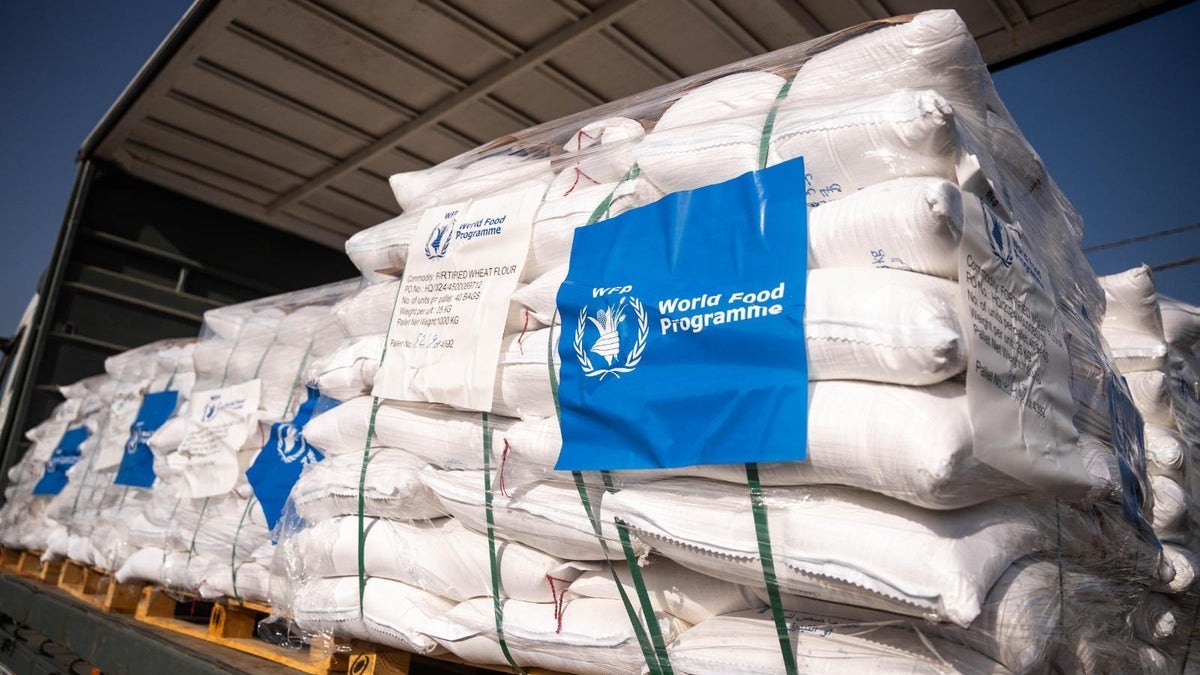
World Food Programme (WFP) aid at the Erez west crossing on the Israel-Gaza border. (IDF spokesman)
The spokesperson claimed: “More than 1.8 million people—close to the entire population of Gaza—are grappling with extreme food insecurity, with at least half of them being children. . . . Acute malnutrition among children is rising at alarming rates. The UNICEF humanitarian cash transfer program is, simply put, keeping children alive in the midst of a war not of their making by providing them with access to essential items for their survival. UNICEF’s monthly budget for humanitarian cash transfers in Gaza averages USD 5 million to support approximately 20,000 families. We estimate that these parameters are too small to significantly impact the local economy.”
The World Food Programme didn’t respond to multiple requests for comment.
In a statement to Fox News Digital, Israel’s Ambassador to the United Nations, Danny Danon, said, “This is yet another example of Hamas showing a complete disregard for the people of Gaza – and exploiting systems and infrastructure to sustain their murderous terror machine.”
“Turning a blind eye is not acceptable. The U.N. Security Council has been addressing terrorist financing since 2001, yet aid agencies continue to ignore the fact that Hamas is making a profit off this money flow, despite international efforts to stop terrorist financing,” Gallo said.
World
Greenland’s PM Nielsen says the US has 'not been respectful'
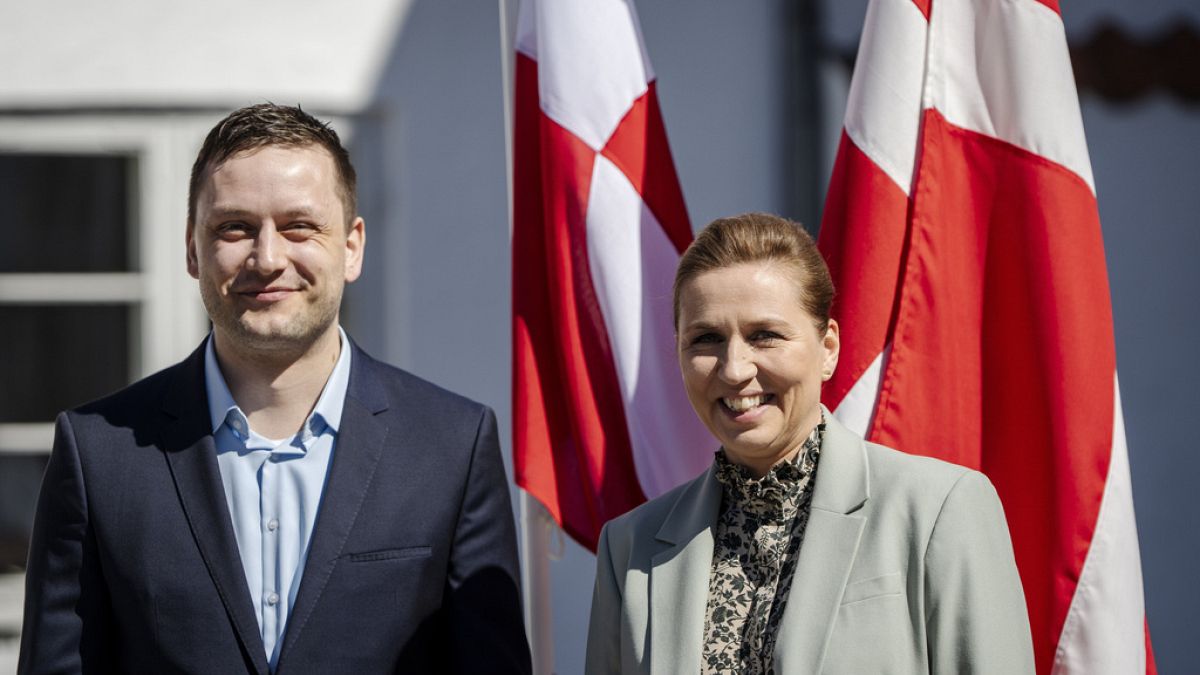
New Greenlandic Prime Minister Jens-Frederik Nielsen stated on Sunday that US comments regarding the mineral-rich Arctic island had been disrespectful, emphasising that Greenland “will never, ever be a piece of property that can be bought by just anyone.”
His comments came after a meeting with Danish Prime Minister Mette Frederiksen at her official residence on Sunday, on the second day of a three-day official visit.
Nielsen’s remarks were in response to US President Donald Trump’s repeated state interest in taking control of the strategically important territory.
During the press conference, Nielsen said “the talk from the United States have not been respectful.”
He continued, “the words used have not been respectful. That’s why we need in this situation, we need to stand together.”
Greenlandic political parties, which have been advocating for eventual independence from Denmark for years, recently formed a broad-based coalition government in response to Trump’s ambitions regarding the territory.
The Greenlandic government stated that Nielsen’s three-day visit, which began on Saturday, was aimed at fostering future cooperation between the two nations.
“Denmark has the will to invest in Greenlandic society, and we don’t just have that for historical reasons. We also have that because we are part of (the Danish) commonwealth with each other,” said Frederiksen.
“We of course have a will to also continue investing in Greenlandic society,” she continued.
Nielsen is scheduled to meet King Frederik X on Monday, before returning to Greenland with Frederiksen for a royal visit to the island.
When asked whether a meeting between them and Trump was in the works, Frederiksen responded, “We always want to meet with the American president. Of course we want to. But I think we have been very, very clear in what is the (Danish commonwealth’s) approach to all parts of the Kingdom of Denmark.”
Greenland is a self-governing territory of Denmark.
Video editor • Lucy Davalou
-

 Education1 week ago
Education1 week agoVideo: Shooting at Florida State University Leaves 2 Dead and 6 Injured
-
News1 week ago
Harvard would be smart to follow Hillsdale’s playbook. Trump should avoid Biden’s. | Opinion
-
Business1 week ago
Porto's Bakery moving forward in Downtown Disney, replacing Earl of Sandwich
-

 Politics6 days ago
Politics6 days agoVideo: Hegseth Attacks the Media Amid New Signal Controversy
-

 Politics1 week ago
Politics1 week agoSupreme Court blocks new deportations of Venezuelans in Texas under 18th century Alien Enemies Act
-

 Culture5 days ago
Culture5 days agoNew Poetry Books That Lean Into Calm and Joy Amid Life’s Chaos
-

 News1 week ago
News1 week agoMaps: Where Do Federal Employees Work in America?
-

 Politics7 days ago
Politics7 days agoPope Francis and US presidents: A look back at his legacy with the nation's leaders



